Dan26552
Loving the herd life
- Joined
- May 6, 2017
- Messages
- 381
- Reaction score
- 226
- Points
- 113
Hi, my name is Dan, I live in lower Alabama and have been breeding and raising rabbits for meat for about a year and a half now. All my rabbits are in tractors on pasture except Angie, Hamada, Jacquelynne and Joyce who are in a colony system. I have 36 rabbits currently, 26 grow outs, 8 breeders and 2 will be breeders come fall. Most of my rabbits are mixes. I have three breeding bucks, five breeding age does and two does who will be breeding age in the fall. One of my Does had a litter of seven last night, she's our best and favorite doe and is an amazing mom so we will be keeping a doe from that litter.
These are Jacquelynne and Joyce, they're half Flemish half Rex. They are both expecting in a week or two.

This is Granny, she just had the litter of seven. She's pure New Zealand.

Her kits. There are three blacks and four whites, two of the blacks are brokens.
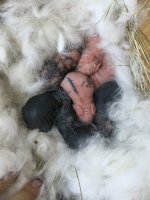
This is Hamada, he's also half Flemish half Rex. He's the dad of Granny's litter and will be the dad of Jacquelynne, Joyce and Angelica's kits.

This is Barrel Rider, he's half New Zealand and half Californian. He's also Granny's son.

This is Sandy, we think she's mostly New Zealand, she's currently nursing a litter of 10.
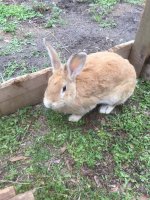
This is Angelica, AKA Angie. She's mostly Flemish.

This is Bernard, we're not sure what he is. He's on the smaller side. He's father of Sandy's kits.


I will post pics of the older kits in another post.
These are Jacquelynne and Joyce, they're half Flemish half Rex. They are both expecting in a week or two.

This is Granny, she just had the litter of seven. She's pure New Zealand.

Her kits. There are three blacks and four whites, two of the blacks are brokens.

This is Hamada, he's also half Flemish half Rex. He's the dad of Granny's litter and will be the dad of Jacquelynne, Joyce and Angelica's kits.

This is Barrel Rider, he's half New Zealand and half Californian. He's also Granny's son.

This is Sandy, we think she's mostly New Zealand, she's currently nursing a litter of 10.

This is Angelica, AKA Angie. She's mostly Flemish.

This is Bernard, we're not sure what he is. He's on the smaller side. He's father of Sandy's kits.


I will post pics of the older kits in another post.

 Nice Dan!!!
Nice Dan!!! 



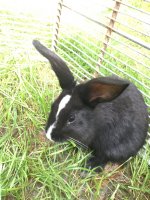




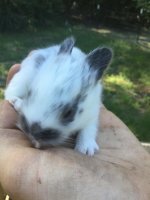
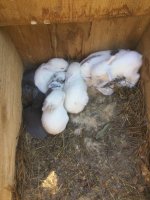
 Well between the animals and the garden I am quite busy. I don't know how I do it.
Well between the animals and the garden I am quite busy. I don't know how I do it.

